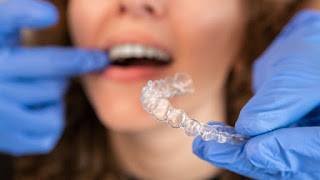What is a bone spur (also known as a bone spicule)?
Bone spurs, also known as bone spicules, are bony protrusions in the soft tissue of your gums. Bone spicule is a little fragment of bone that becomes stuck in your gum and causes discomfort, inflammation, and swelling in the area. Diseases, oral surgery (e.g. tooth extraction), drugs, and dental trauma or injury can all induce bone spurs. Osteonecrosis of the jaw is the medical term for a bone spur or spicule in the gum (ONJ). Necrosis means "dead," and it refers to a dead bone fragment that protrudes from your gum. It can occur in both jaws, and you may believe it is caused by your broken teeth, but it is not.
What Can I Do If I Have A Bone Spur In My Mouth?
Dentists, on the other hand, are well-prepared for bone spurs and know just how to treat them. Never attempt to remove a bone spur on your own; if it feels sharp, it very well may be! You risk i
njuring the soft tissues that surround it, putting you at risk of infection. Furthermore, abandoning a DIY extraction halfway through and running to the hospital due to discomfort is never a smart idea. That's why, as soon as you see a bone spur in your mouth, you should schedule an appointment with a knowledgeable dental practitioner.
An oral exam or X-ray will be performed by a dentist to determine if there is true growth and how to manage it. The good news is that bone spur removal is a simple treatment, and your dentist's aim is to help you maintain your dental health while reducing pain.
After tooth extraction, a bone spur develops.
During the healing process after a tooth extraction, the body may grow bone on top of existing bone, even if it is not required. Alternatively, it may reject a bone fragment, causing it to protrude from your gums. These can be sharp and cling to or protrude from your gums, causing pain and discomfort. This isn't always the case, though.
However, in certain rare circumstances, a bony growth might obstruct daily actions like speaking, eating, or chewing, or irritate specific areas of the mouth. It may eventually result in the establishment of an oral ulcer. As a result, the soft tissues around the hard bone bump on the gums might get infected. All of this indicates that it must be surgically removed.
Is It Harmful To Have A Bony Protrusion On Your Gums?
Fortunately, a bony protrusion on the gums is usually harmless. Many persons might have dental exostoses while still being in good health. Their dental health can be as excellent as someone without exostoses if they practice good oral hygiene, brushing, and flossing on a regular basis.


Comments
Post a Comment